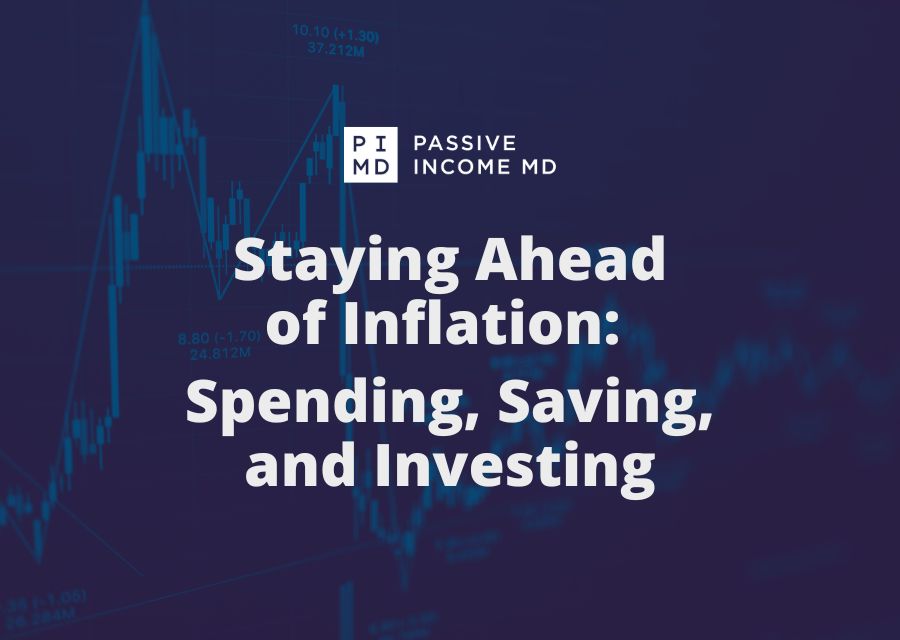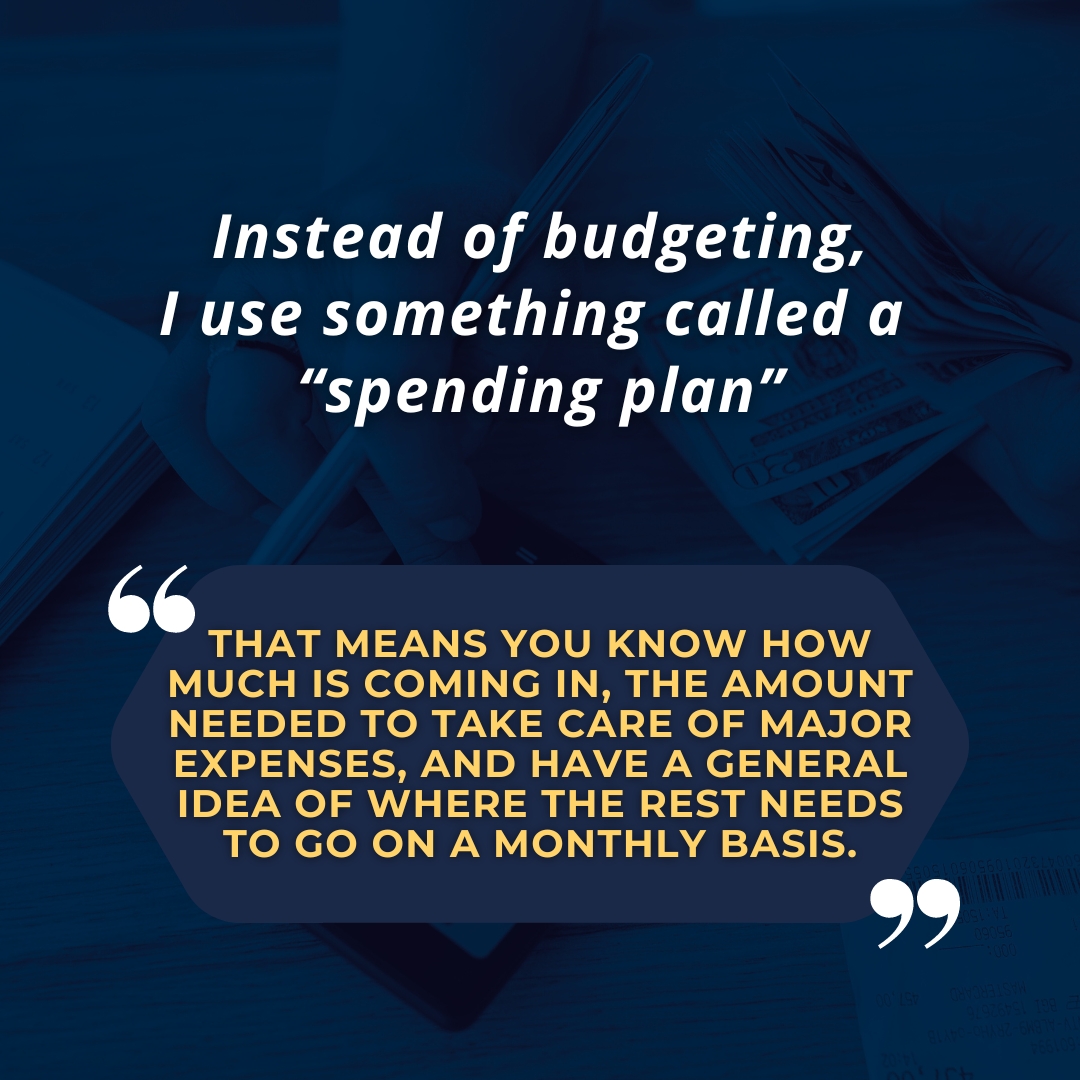
Staying Ahead of Inflation: Spending, Saving, and Investing
This post may contain links from our sponsors. We provide you with accurate, reliable information. Learn more about how we make money and select our advertising partners.
We’ve been dealing with heightened inflation for several years now. How has it impacted you and your family?
Inflation isn’t just an economic term. It’s a reality. It touches all of us daily, whether we notice it or not. From the price of bread or eggs, the cost of education, to rent, inflation shapes our spending and saving. Staying ahead and being resilient will impact the way we live our lives and work toward our financial goals.
So, how can we navigate through the current uncertainty of inflation? There are a number of ways.
Table of Contents
Develop a Spending Plan
First, I need to make a confession. I’ve never been great at traditional budgeting. You know the kind I’m talking about? That’s where you account for every dollar, knowing how every red cent is earned or spent—the nuanced ins and outs. Some people love that kind of accounting, and more power to them. It’s just never been my thing.
Despite that confession, it doesn’t mean I navigate finances blindly. Instead of budgeting, I use something called a “spending plan.” It’s a more flexible approach, tailored to adapt to your goals or whatever might come your way.
What is it? A spending plan is understanding your financial cash flow. That means you know how much is coming in, the amount needed to take care of major expenses, and have a general idea of where the rest needs to go on a monthly basis.
Where else should you send your income? First, I put some money into savings and set aside a portion for investments as I work toward my financial goals. And then, we can spend modestly outside of that.
For my family, our spending plan is geared toward experiences and travel—we tend to spend less on goods. And your spending plan will be different depending on your needs and wants.
What’s key in a spending plan is that you have dedicated amounts of your monthly income devoted to saving and investing. If you practice discipline with that part of your spending plan, inflation won’t impact you as much—or, at least, you won’t be walking around with fear in the back of your mind. That’s because your spending plan is helping you secure the investments required to stay ahead of inflation. Speaking of which…

INTERESTED IN ways to navigate and adapt to the effects of inflation? SUBSCRIBE AND TUNE IN TO OUR PODCAST:
#190 How Inflation Has Shaped our Spending, Saving, and Investing ft. Peter Kim, M.D
Funnel Your Income into Investments
The Consumer Price Index, or the CPI, is a tool that helps us see how much prices of everyday things like food, clothes, and housing go up or down over time. It gives us a sense of how much the cost of living is changing.
In April of 2022, the CPI hit a high at 7.79% but has since cooled to 3.1%. The recent increases in inflation got me wondering: How much has my family’s spending increased in areas like food and dining out? Well, I found we spend 15-20% more on groceries and dining than we did two years ago. A Chipotle meal is now 20 bucks. A McDonalds meal is nearing fifteen bucks. Yikes!
There are many factors at play here. Soaring prices for food—and not to mention my growing kids—are mostly to blame. As a family, we’re dealing with rising costs. And generally speaking, annual salaries aren’t seeing a corresponding uptick.
That means inflation is eroding the value of money and diminishing purchasing power. A thousand dollars doesn’t go as far as it used to. By understanding the CPI’s effect on our spending, we can get a better understanding that we can stay ahead of inflation by investing in assets that keep pace or grow at better rates than inflation.
Funnel your income—whether that's medical income, business income, passive income, or a combination—quickly into appreciating assets. For me, I focus primarily on real estate followed by stocks, bonds, and commodities (like gold).
The point is to use the income generated from our professions and then quickly put it into appreciating and cash-flowing assets, slowly removing our “working” time from the financial equation—meaning our money starts to work for us. It passively grows on its own outside of your day job. This is a long-term strategy that wins.
Focus on Long-Term Holds
When it comes to assets—real estate, portfolio stocks, bonds, and commodities—it’s important to focus on long-term acquisition and hold. Because I mostly invest in real estate, that means I snap up a ton of syndications. The goal is to ultimately create long-term cash flow that can withstand economic fluctuations and grow over time.
Across asset types, real estate commodities are typically considered a strong hedge against inflation, meaning that values tend to rise with inflation. That’s because the prices of things required to make new homes—wood, steel, concrete, and everything else—increase with inflation, increasing the value of your owned properties. On the other hand, salaries don’t tend to steadily rise each year in the same way.
For those who like to invest in stocks and bonds, the name of the game is diversification. When you build a diversified portfolio, all of your eggs won’t be in one basket, helping your assets grow steadily no matter the nuanced ups and downs of the market.
So, your spending might go up in times of high inflation, but the good news is your assets continue to grow, helping you stay ahead of the game.
Know the Risks
As you look for those long-term investment opportunities, you have to be thoughtful with your decision making.
What is your risk tolerance? Know what’s suitable for you and how much you’re willing to put at risk while beating inflation to achieve your financial goals. Click here for ways to increase your risk tolerance.
Risk can be determined in a number of ways. If your income is primarily based on your medical income, how much financial security does it come with? Would you be majorly impacted by a single administrative change, insurance change, or if a private equity firm comes in? If your day job income is volatile and easily impacted, you might have a lower risk tolerance right now.
If you are assessing the risk of long-term investments, start doing your homework based on the asset class. In real estate, for example, I look at the Internal Rate of Return, Equity Multiple, and Cap Rate, among other metrics. These quickly tell me if a targeted property has intrinsic value for long-term growth, mitigating my risk while staying ahead of inflation. This way, I can more comfortably invest while staying within my risk tolerance.

Confidently Invest in Passive Real
Estate Deals in Just Four Weeks!
Everyone knows that investing in real estate can be intimidating, but it doesn’t have to take years to learn. Passive Real Estate Academy (PREA) is your opportunity to join a community of like-minded investors who will show you how to leverage other people’s time, capital, and experience to create your ideal life.
Our course in passive income for physicians meets you where you are. Whether you’re entirely new on your journey to financial freedom or are already building your passive income streams, you’ll find value in our course that expedites the process of becoming an expert.
Join a community of doctors who support each other on the journey to creating passive income!
What Happens Next for the Economy?
I don’t have a crystal ball, but I have a strong feeling that, in 2024, the Fed will look to cut rates. Interest rates will start to go down. And what will that do? It stimulates the economy, encouraging spending. Cash will flow back into the market, which means big players out there will feel comfortable buying back into the system. Some asset classes, like commercial real estate, might take a little longer.
But when that pivot happens — what is called the “fed pivot”— asset values will start to rise again. That’s why it’s important to ride this wave of high inflation with intentionality. We only get a couple of these opportunities in a lifetime. If you are able to time an economic downturn perfectly and ride that wave for a few years as your long-term investments grow, that can have a life-changing impact on your financial future.
These are complicated issues, and one article is not enough to do them justice. Make sure you’re part of a community that has the same mindset as you when it comes to long-term investment and risk assessment when staying ahead of inflation.
We here at Passive Income MD have a number of communities where you’ll find like-minded individuals. Consider joining our Passive Income Doc Facebook Group of thousands of physicians who are also on their journey to creating their ideal lives through multiple sources of income.
Until next time, stay informed, stay connected, and stay proactive!
Peter Kim, MD is the founder of Passive Income MD, the creator of Passive Real Estate Academy, and offers weekly education through his Monday podcast, the Passive Income MD Podcast. Join our community at the Passive Income Doc Facebook Group.
Further Reading
Disclaimer: The topic presented in this article is provided as general information and for educational purposes. It is not a substitute for professional advice. Accordingly, before taking action, consult with your team of professionals.

